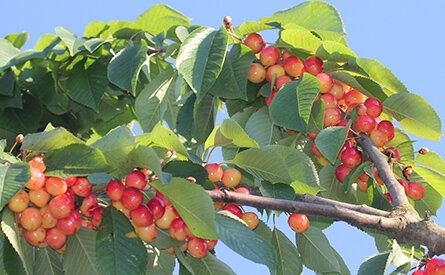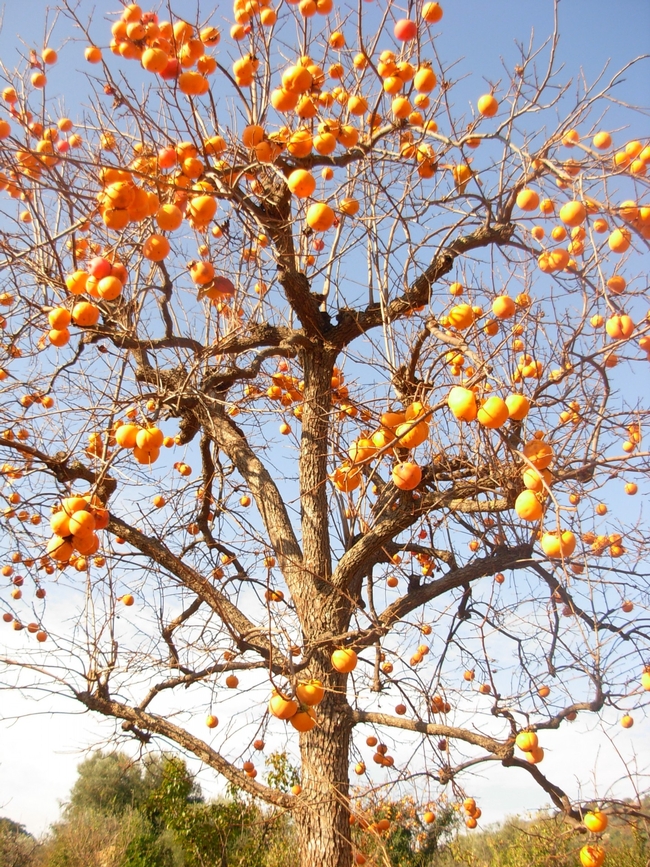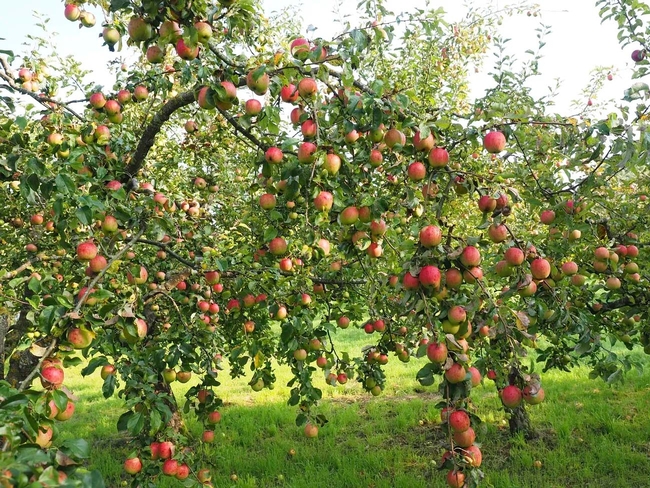I had a beautiful cherry tree many years ago that produced a lot of fruit. If I wanted to pick cherries before the birds ate them all I had to use a ladder.
This really wasn't safe because I was leaning over the ladder trying to reach the cherries without getting off said ladder. In this case I fear the birds won.
I planted a persimmon tree about the same time as the cherry and it is still growing vigorously. It has reached 30 feet, and each year the birds have a winter feast because the fruit on the top is beyond picking. I've kept my other persimmon tree shorter by pruning the top and the fruit is much easier to harvest.
Another advantage to keeping fruit trees small is that you can fit more of them in a small backyard. If a fruit tree is allowed to grow to its full potential, it will shade other trees and limit fruiting.
You can plant genetically dwarfed fruit trees but they too need pruning. Once they reach the desired size and shape, you must continue pruning them each year. An unpruned tree will fruit only on the upper branches. Pruning opens up the tree, improving air flow and reducing disease pressure.
I had been hearing and reading about growing a fruit tree as a bush. The shaping has to start the day you plant them. At planting time, cut the tree to a height of 24 to 30 inches above the graft. (Most fruit trees are usually grafted onto rootstock although walnut trees are an exception.)
As the tree grows, prune each year to keep the tree small and allow the lower branches to develop.
I once decided that an apple tree was too tall and I wanted to be able to pick the fruit without a ladder. It took me a few years to lower the fruiting zone but it worked. This elderly tree continues to produce new branches and bear fruit every year.
For the past several years, I've been summer-pruning my fruit trees as well. The idea here is to remove new wood that's growing upward and has not developed into fruiting wood. Be sure to cut where a bud is forming. Leave the fruit on the lower branches, thinning the fruit if there are too many on a single branch.
Winter pruning should be done now while the tree is dormant. When the tree blooms, the sap starts to flow. Use sharp pruners to prevent ragged cuts. Cut just above a bud. Keep the top of the tree open so air can move through the tree and sunlight can reach the lower branches. Those branches need sunlight to form fruit. One instructor I studied with said to leave the tree open enough in the middle so that a bird can fly through it.
The Agriculture and Nature Resources (ANR) division of the University of California has an excellent publication on all types of fruit tree pruning, including how to create fruit bushes. You can find the publication at https://homeorchard.ucanr.edu/8057.pdfhttps://homeorchard.ucanr.edu/8057.pdf. Whether your fruit tree is newly planted or an older tree that needs reshaping, you'll find helpful guidance here. So sharpen your tools and get to work. And remember, working in your garden isn't work. It's therapy!
Workshop: Join UC Master Gardeners of Napa County for a workshop on “Spring Garden Planning for Warm Weather” on Saturday, February 25, from 10 am to noon, at Las Flores Community Center, 4300 Linda Vista Avenue, Napa. Learn how to prepare your landscape for warmer weather, including cleanup, pruning, tool care, soil preparation and seed starting. The workshop will be indoors, with some outdoor activities if weather permits. Registration required: https://surveys.ucanr.edu/survey.cfm?surveynumber=39854
Library Talk: Join UC Master Gardeners of Napa County and Napa County Library for a free talk on “Success with Citrus Large and Small” on Thursday, March 2, from 7 pm to 8 pm via Zoom. Learn how to choose the best tree for your space, plus healthy growing techniques, fertilizing, managing pests, watering, protecting from frost and growing in containers. Register to receive the Zoom link: https://ucanr.edu/2023MarCitrusLibraryTalk
Food Growing Forum: Join UC Master Gardeners of Napa County for a hands-on workshop on “Spring and Summer Vegetables” on Sunday, March 12, from 2 pm to 4 pm, at UCCE Office, 1710 Soscol Avenue, Napa. Your best summer vegetable garden begins in March. Plant quick-growing cool season vegetables now before the weather warms, and follow those crops with the ones that love our warm summer days. Learn about soil maintenance, seed starting and irrigation. Garden-ready seedlings and planting calendars will be shared. The forum is free but registration is required at https://ucanr.edu/2023foodforummarch.
Help Desk: The Master Gardener Help Desk is available to answer your garden questions on Mondays and Fridays from 10 a.m. until 1 p.m at the University of California Cooperative Extension Office, 1710 Soscol Avenue, Suite 4, Napa. Or sSend your questions to mastergardeners@countyofnapa.org. Include your name, address, phone number and a brief description of the problem. For best results, attach a photo of the plant. You may also leave a voicemail message with the same information at 707-253-4143.


